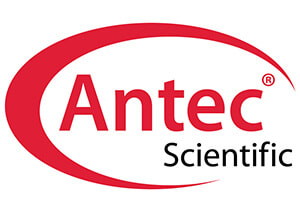The use of on-line electrochemical (EC) reduction of disulfide bonds in LC-MS has shown great potential for the fast assignment of S-S bonds in peptides/proteins including mAbs and other biopharmaceuticals. With the introduction of the µ-PrepCell SS, highly efficient and robust online reduction of disulfide bonds is now possible. The cell allows for continuous operation of several days without contamination or loss of reduction efficiency and is ideally suited for reduction of high disulfide-stabilized proteins. Online reduction occurs within several seconds as compared to conventional offline chemical methods which can take hours or longer to achieve a similar result. With its pressure stability up to 350 bar the cell combines perfectly with HDX-MS. Overall much higher sequence coverage has been found in HDX-MS when compared to chemical reduction (TCEP, DTT) and new cysteine peptides could be identified in LC-EC-MS settings.
- Fast and efficient reduction of S-S bonds
- Long term stability and reproducibility
- Reagent free, no interfering DTT, TCEP
- Superior peptide sequencing and S-S bond assignment
The new μ-PrepCell SS consists of a dual electrode set-up, i.e., working electrode and counter electrode, unlike its predecessor, which contained an additional reference electrode (3 electrode setup). This new 2 electrode cell configuration results in distinguished advantages such as: superior stability and longevity, no undesired peptide/protein oxidation during the reduction and overall much easier in use. Another advantage of the new design is the much higher pressure stability of up to 350 bar, allowing for its use in HDX-MS and precolumn LC settings (EC-LC-MS).





